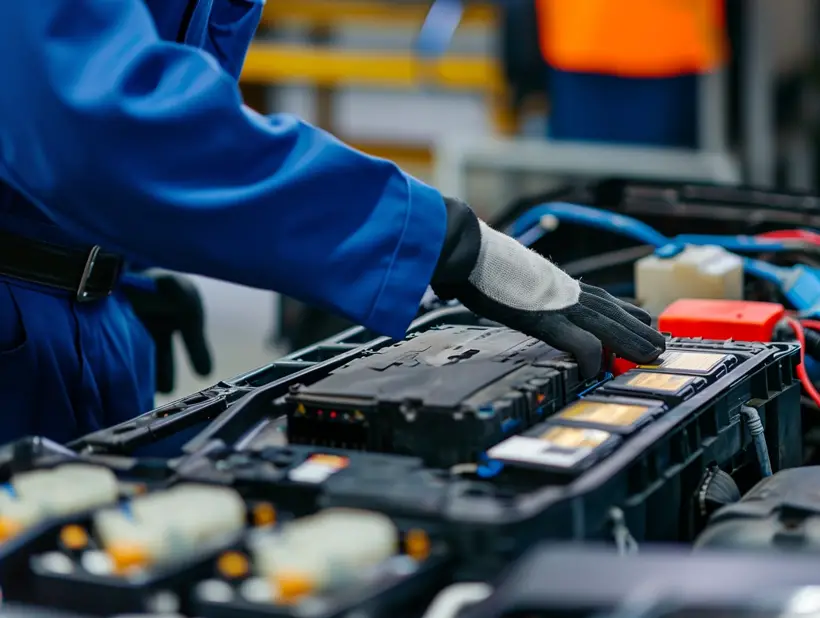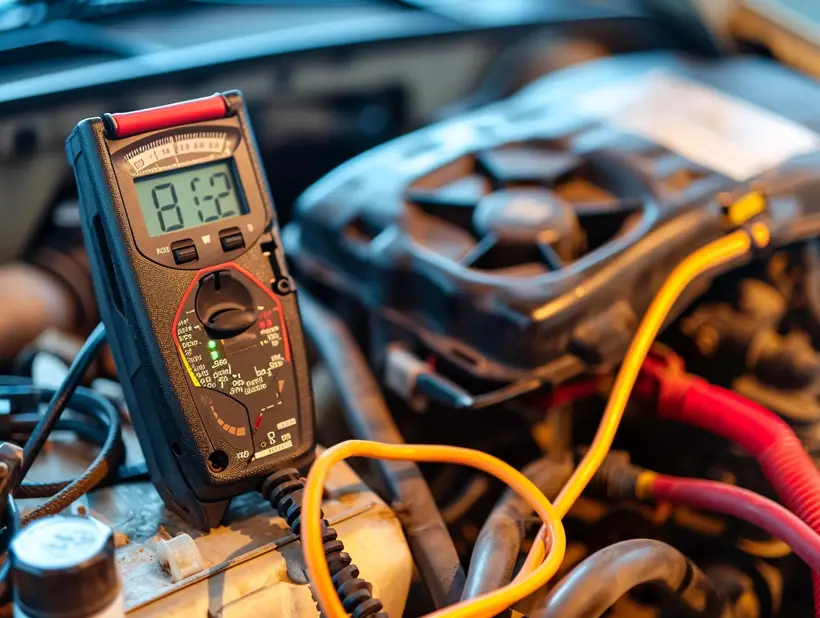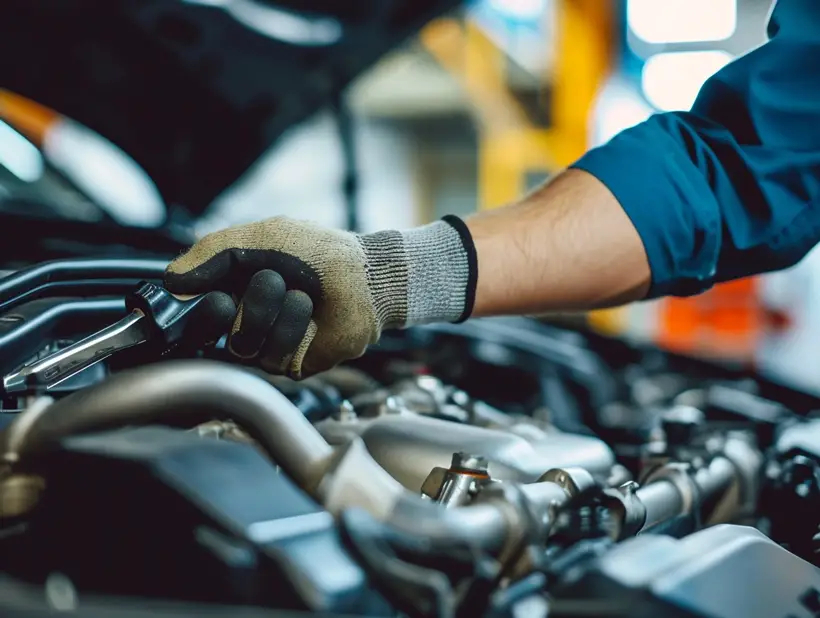Ever been in a rush only to turn your key and hear nothing but a series of clicks? It’s the kind of heart-sinking moment that can throw off your whole day. But before you let stress take the wheel, know that I’m here to help diagnose the issue.
That dreaded clicking noise is often a telltale sign of a bad starter. I’ve been there, and I’ve learned that understanding the symptoms and causes can save you time and money. Let’s dive into what your car’s trying to tell you and how to pinpoint the problem.
What is a starter?
When you turn the key in the ignition or press the start button, you expect your car to roar to life. This seamless operation is thanks to a small but crucial component called the starter. It’s essentially an electric motor connected to your car’s battery. Its primary role is to kick off the engine’s operation by spinning the flywheel, which gets the pistons moving and begins the internal combustion process. Without a properly functioning starter, your engine won’t start, explaining the ominous clicking sound you may be experiencing.

Key Functions of a Starter
The starter motor is designed to handle high currents from the car battery to create a powerful movement that will get the engine started. It has several key parts:
- Solenoid: This is a small coil of wire that essentially acts as a relay. When you turn the key, the solenoid engages, pushing the starter gear forward to connect with the flywheel.
- Motor: Once the gears are engaged, this motor turns and spins the flywheel, helping to start the engine.
- Pinion Gear: This gear connects with the flywheel and helps in turning the engine over.
Symptoms of a Failing Starter
Recognizing the signs of a failing starter can save you from being stranded with a non-starting car. Look out for these symptoms:
- Persistent clicking noise when trying to start the car
- Engine takes longer than usual to start or doesn’t start at all
- Headlights dim when you try to start the engine (indicating the starter may be drawing too much power)
By understanding the pivotal role of the starter in your vehicle’s ignition process, you’re better equipped to identify when issues arise. Remember, some cars have starters that are more inaccessible than others, and sometimes what seems to be a starter problem might actually be an issue with the battery or the connections leading to the starter. That’s why it’s important to conduct a thorough diagnosis before jumping to conclusions about the underlying issue.

Understanding the clicking noise
When you turn the key in the ignition and are met with a clicking noise, it’s essential to interpret what your car is trying to tell you. This distinct sound typically suggests that your starter motor is receiving some electrical current but not enough to engage the engine fully. There are several reasons behind this clicking noise, and identifying them can guide you toward the appropriate solution.
First, let’s consider the battery. It’s often the culprit when there’s a clicking sound. The battery may not have enough charge to power the starter motor due to either a weak battery, poor terminal connections, or a drain on the system. A professional load test can reveal if the battery is indeed the issue.
I’ve also learned that a faulty starter relay can produce a similar clicking noise. This small electromagnetic switch is responsible for transmitting power from the battery to the starter. If it fails, the current won’t reach its destination, preventing the car from starting.
Corrosion on the battery terminals is another factor that can’t be overlooked. It impedes the flow of electricity, and thankfully, visually inspecting the terminals can quickly tell you if there’s a corrosion problem.
Here’s what you should watch for:
- Faint or repetitive clicking
- A single, audible click with no engine turnover
- Slower cranking speed, resulting in a series of slow clicks
To give you a better idea, let’s look at a quick comparison chart that showcases the different sounds and potential starter conditions:
| Sound Description | Possible Starter Condition |
|---|---|
| Faint repeated clicks | Weak battery or poor connections |
| Single sharp click | Possible starter relay malfunction |
| Series of slow clicks | Drained battery or faulty starter |
Beyond the battery and starter relay, we shouldn’t ignore the starter solenoid‚Äîa switch that activates the main starter motor. A malfunction here can certainly mimic the noises of a dying battery or a failing starter relay. And let’s not forget about the flywheel; problems with it can also hinder the starter’s ability to function but tend to produce a grinding noise instead.
Symptoms of a bad starter
When I suspect my car’s starter might be failing, there are specific symptoms I look for that indicate it could be the culprit behind starting issues. These symptoms can vary but tend to be quite distinctive:
- Persistent Clicking Noise: As mentioned earlier, a clear sign is when I turn the key and hear a clicking sound but the engine doesn’t turn over. This could hint at a problem with the starter solenoid.
- Engine Doesn’t Crank: If I attempt to start the engine and it doesn’t crank at all, the starter motor could be at fault, especially if the battery is charged.
- Intermittent Starting Problems: There are days when my car starts without a hitch, and other days when it’s unresponsive. This inconsistency often points to a failing starter.
- Smoke or Burning Smell: When there’s an electrical short or the starter has been overworked, I might notice smoke or a burning smell coming from the engine area.
- Oil Soak: The starter is located close to the engine, so it can end up soaked in oil from engine leaks. Oil-soaked components can deteriorate faster.

In addition to these signs, I always pay attention to the following red flags:
- Freewheeling: If when I try to start the car, it sounds like the engine is turning over faster than usual, this could mean the starter gear is not engaging with the flywheel.
- Battery Light Displays: A lit battery light on the dashboard might be misleading, but it’s worth checking the battery health as part of the diagnosis.
I find keeping a log of these symptoms useful when diagnosing car problems. Sometimes the issues are transient and can be missed during a single check. Here’s a summary table of these symptoms for quick reference:
| Symptom | Possible Starter Related Cause |
|---|---|
| Persistent Clicking | Faulty Starter Solenoid |
| Engine Doesn’t Crank | Broken Starter Motor |
| Intermittent Issues | Loose Wiring or Failing Starter |
| Smoke/Burning Smell | Electrical Short or Overuse |
| Oil Soak | Oil Leak near Starter leading to Damage |
| Freewheeling | Starter Gear and Flywheel Issue |
| Battery Light Displays | Secondary Electrical Issue Affecting Starter |
Causes of a bad starter
When dealing with the frustration of a car that won’t start and you’re hearing that ominous clicking noise, pinpointing the cause is crucial. My experience wrenching on cars has led me to identify several common culprits that could lead to a bad starter. Here’s what I’ve discovered:
First, the issue might be as straightforward as a dead battery. This is the most benign problem and the simplest to fix. Just charge or replace the battery and you could be back in business. If the battery’s charge is fine, then it’s time to dig a bit deeper.
Corrosion is another major player. Battery terminals covered in gunk won’t allow the necessary current to reach the starter. This can trick you into thinking the starter’s failed when a good clean is all that’s needed.
However, don’t overlook the starter solenoid. That’s the part responsible for pushing the electric current to the starter motor. If it’s faulty, that clicking noise could be its cry for help.
Electrical connections throughout the starter system also need to be solid. Any frayed wires or loose connectors can lead to intermittent starting issues. It’s similar to a poor Wi-Fi connection ‚Äì spotty and unreliable.

Mechanical failure inside the starter motor itself is always a possibility. Broken gear teeth or a seized motor won’t muster the strength to turn your engine over. That’s typically when I advise checking for the worst offenders:
- Worn brushes in the motor
- Failed bearings or bushings
- Short circuits or open circuits within the internal windings
Last, the ignition switch – yes, the one you insert your key into – can be the real troublemaker. It might fail to send the activation signal to the starter solenoid, and that leaves you with that maddening clicking.
It’s worth mentioning that environmental factors like extreme cold can increase the likelihood of starter issues. Such conditions make your car’s battery work harder and can exacerbate any underlying problems.
Troubleshooting steps
When dealing with a car that won’t start accompanied by a clicking noise, it’s crucial to approach the issue systematically. Troubleshooting a bad starter can be done step by step to isolate the problem and, hopefully, pinpoint the defect.
Firstly, I check the battery. It’s often the culprit when it comes to starting issues. I’ll look for signs of a low charge or a dead battery, such as dim headlights or a sluggish engine turnover. I use a multimeter to test the battery voltage which should be around 12.6 volts when the engine is off and approximately 14-14.5 volts when it is running.
Next, I inspect for loose or corroded connections. These can disrupt the flow of electricity to the starter motor. I clean any corrosion with a wire brush and ensure that all connections, including battery terminals and starter solenoid connections, are secure.
The starter solenoid should be tested if the battery appears operational. A single click usually indicates a possible solenoid issue whereas rapid clicking could point to insufficient power from the battery.
Should the solenoid seem functional, I’ll consider mechanical defects within the starter motor. I listen for the sound of the motor spinning without the engine cranking; this is a phenomenon known as ‘freewheeling’ and suggests internal damage.
Finally, if the starter shows no obvious faults, my attention turns to the ignition switch and the electrical circuitry of the starter system. Intermittent starting problems sometimes lead back to a malfunctioning ignition switch or a broken circuit.
Throughout this process, it’s imperative that I make safety a priority by ensuring the car is in park or neutral with the emergency brake applied. Wearing protective gear, like gloves and safety glasses, safeguards me from accidental sparks or battery acid.
Each of these steps has the potential to reveal the root cause of the starting issue, effectively narrowing down the search to a precise component or connection that needs repair or replacement. While I methodically test each element, I’m geared towards a resolution that will have my car starting reliably once again.
Conclusion
Tackling car troubles can be daunting but understanding the signs of a bad starter is crucial. I’ve walked you through the essential checks to pinpoint the problem. Remember, safety’s always a priority when dealing with vehicle repairs. Don’t hesitate to consult a professional if you’re unsure about the process. With a bit of patience and careful examination, you’ll have your car up and running in no time. Trust your instincts, use these tips, and you’ll be back on the road with the confidence that comes from solving your own automotive issues.
